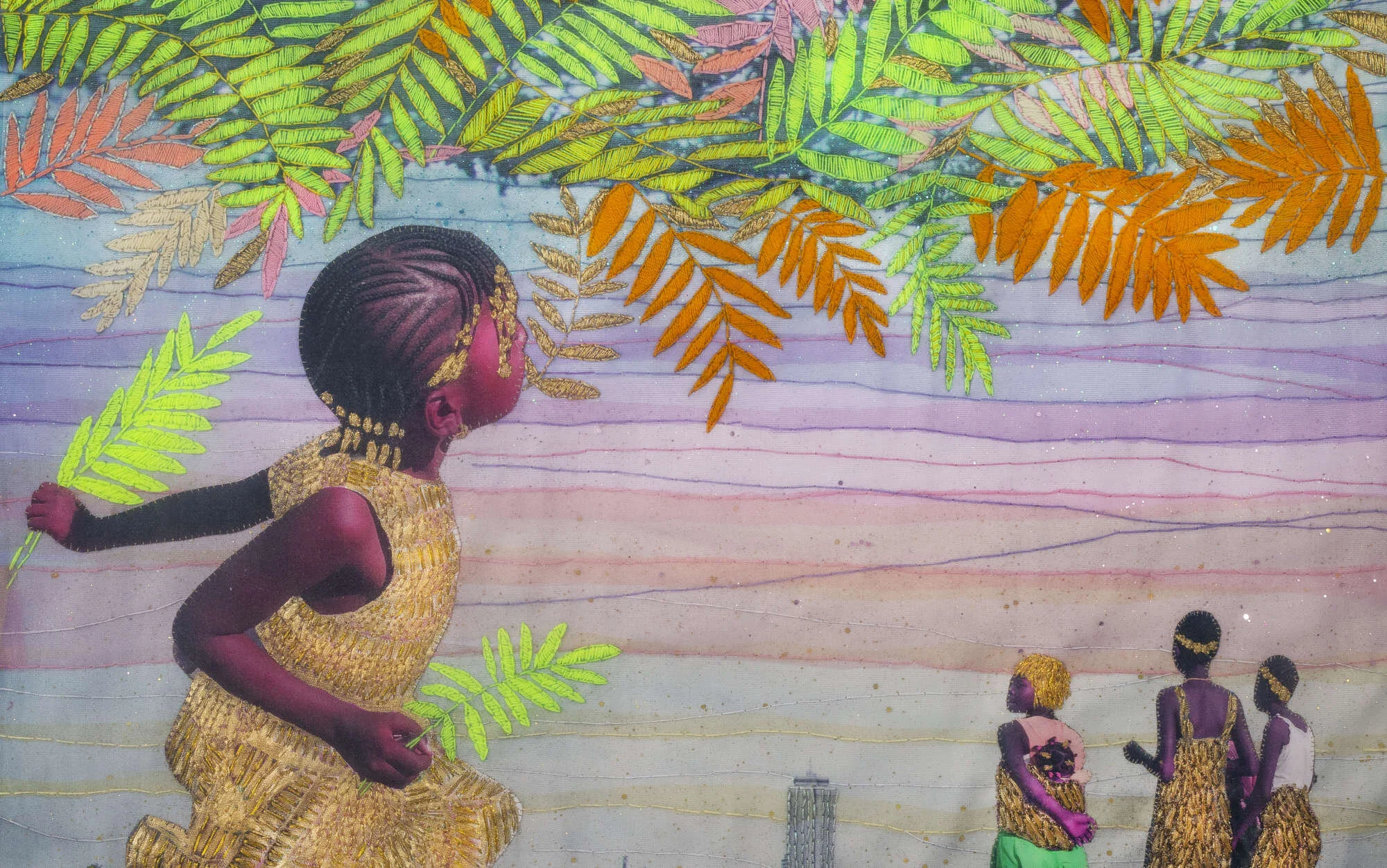African cities become restorative dream worlds through the powerfully quiet works of this Ivorian artist
“There are many ways to protest. Mine is a soft and silent way,” says Joana Choumali. And while this may be so, it’s no less colossally moving. The Ivorian photographic-textile artist is currently reimagining artistic concepts of the African urban landscape, one stitch at a time. Like all protests it’s political, and yet deeply personal. The power of her latest works is perceptible in its audience’s reactions. At the opening of her current exhibition at Gallery 1957, Accra – a show where several large-scale pieces depict evocative dawn-time images of the Ghanaian capital - one woman entered only to leave soon afterward in tears. She later returned to take one for herself.
“It’s like a prayer,” the artist explains of the catharsis that results from her working process, ‘‘my studio is my refuge.” This hasn’t always been the case however. Choumali grew up in Abidjan, studied graphic arts in Casablanca and worked in advertising before successfully moving into photography and has exhibited widely ever since. One of her most critically lauded series, Hââbré/The Last Generation – photographic portraits of scarified Burkinabè men and women from across the continent - won the 2014 Popcap Prize and LensCulture Emerging Talents Award.
Then following the March 2016 terrorist attacks on the historic Ivorian town of Grand-Bassam, the artist begun to incorporate embroidery into her practice, finding the slow process an extremely meditative and intimate one. It can take months to complete one work as she hand stitches threads into her photographs printed on cotton canvas.
“There are many ways to protest. Mine is a soft and silent way”
She feels that this intuitive method has also helped to reassert her place as an artist, a woman, an Ivorian, and an African. “I realised the power of the fabric – it’s magical,” she explains, thinking back to the first time she witnessed women dressing in traditional fabrics for one of her earlier portrait series. “Women would come in jeans or trousers, and in the fabric they would transform.” It’s the metamorphic role of cloth that influenced her decision to include it. But does its power perhaps guide her as much as she guides it? “Yes, I like to touch the fabric. It’s reassuring.”
Her first full series using this method, Ca Va Aller, saw Choumali make the shortlist of the Prix Pictet, unveiled at Les Rencontres d’Arles this July. The body of work spoke to the edition’s theme of ‘hope’ in that it was her way to “lie down the emotions, the loneliness and mixed feelings” she felt when visiting Bassam after the attack, and to more broadly address mental health issues in her country.
Though her works stem from a deeply private and introspective place, the results manifest as scenes of cities that we might all recognise - just in altered states. She eschews preconceived notions of African cities, which for Choumali aren’t only loud and vibrant, but are also whimsical and blushing places caressed in purples, pinks and light blue hues. This is informed greatly by the time of day she takes her photographs. Shooting between 5 and 7am, when she goes for her morning walk, Choumali surveys the scenes around her, observing landscapes, the shapes of buildings and objects slowly revealing themselves - the streets and its people awakening, starting a new day.
There is also a watery, regenerative presence at work – as though water deities might exist just at the peripheries of her pieces. Often seen as a place of danger or unstoppable power, Choumali’s landscapes embraces their watery undertones. “I love Côte d’Ivoire in the time of the mist,” she reflects, lighting up at the thought of this humid haven, “and I like to work by the sea. I could find peace by the water.... regeneration... I see water as welcoming.”
In this otherworldly realm between the death of night and the rebirth of dawn, Choumali choses to breath new life into everyday images we might otherwise have passed by. “I see poetry where I stand,’ she concludes, explaining how the ordinary becomes extraordinary to her mind’s eye. And momentarily gazing through this poet’s art, her beautifully constructed ruptures to day-to-day life, it’s possible that we as an audience might just too.
Joana Choumali: How Do You Spell A Silent Sound is on view at Gallery 1957, Accra until 5 October 2019







